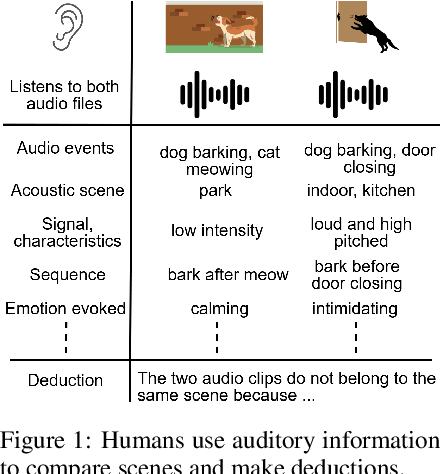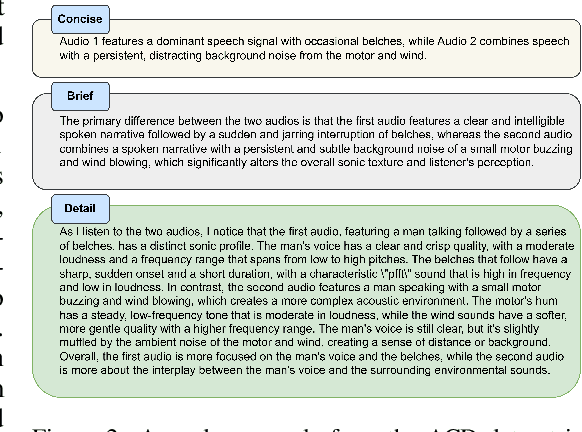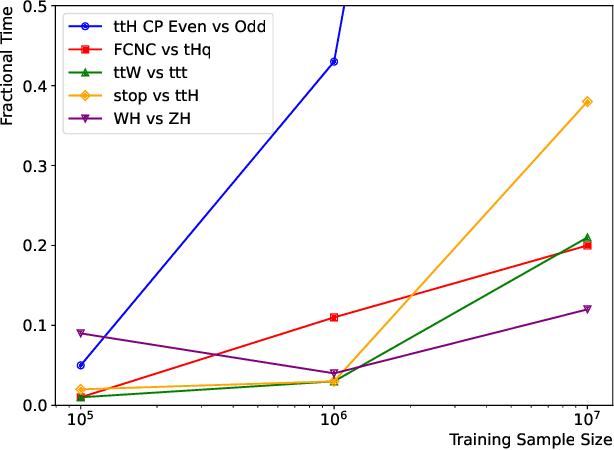Shuo Han
PRIME: Planning and Retrieval-Integrated Memory for Enhanced Reasoning
Sep 26, 2025Abstract:Inspired by the dual-process theory of human cognition from \textit{Thinking, Fast and Slow}, we introduce \textbf{PRIME} (Planning and Retrieval-Integrated Memory for Enhanced Reasoning), a multi-agent reasoning framework that dynamically integrates \textbf{System 1} (fast, intuitive thinking) and \textbf{System 2} (slow, deliberate thinking). PRIME first employs a Quick Thinking Agent (System 1) to generate a rapid answer; if uncertainty is detected, it then triggers a structured System 2 reasoning pipeline composed of specialized agents for \textit{planning}, \textit{hypothesis generation}, \textit{retrieval}, \textit{information integration}, and \textit{decision-making}. This multi-agent design faithfully mimics human cognitive processes and enhances both efficiency and accuracy. Experimental results with LLaMA 3 models demonstrate that PRIME enables open-source LLMs to perform competitively with state-of-the-art closed-source models like GPT-4 and GPT-4o on benchmarks requiring multi-hop and knowledge-grounded reasoning. This research establishes PRIME as a scalable solution for improving LLMs in domains requiring complex, knowledge-intensive reasoning.
Towards Human-AI Collaboration System for the Detection of Invasive Ductal Carcinoma in Histopathology Images
Aug 11, 2025Abstract:Invasive ductal carcinoma (IDC) is the most prevalent form of breast cancer, and early, accurate diagnosis is critical to improving patient survival rates by guiding treatment decisions. Combining medical expertise with artificial intelligence (AI) holds significant promise for enhancing the precision and efficiency of IDC detection. In this work, we propose a human-in-the-loop (HITL) deep learning system designed to detect IDC in histopathology images. The system begins with an initial diagnosis provided by a high-performance EfficientNetV2S model, offering feedback from AI to the human expert. Medical professionals then review the AI-generated results, correct any misclassified images, and integrate the revised labels into the training dataset, forming a feedback loop from the human back to the AI. This iterative process refines the model's performance over time. The EfficientNetV2S model itself achieves state-of-the-art performance compared to existing methods in the literature, with an overall accuracy of 93.65\%. Incorporating the human-in-the-loop system further improves the model's accuracy using four experimental groups with misclassified images. These results demonstrate the potential of this collaborative approach to enhance AI performance in diagnostic systems. This work contributes to advancing automated, efficient, and highly accurate methods for IDC detection through human-AI collaboration, offering a promising direction for future AI-assisted medical diagnostics.
CoLMbo: Speaker Language Model for Descriptive Profiling
Jun 11, 2025Abstract:Speaker recognition systems are often limited to classification tasks and struggle to generate detailed speaker characteristics or provide context-rich descriptions. These models primarily extract embeddings for speaker identification but fail to capture demographic attributes such as dialect, gender, and age in a structured manner. This paper introduces CoLMbo, a Speaker Language Model (SLM) that addresses these limitations by integrating a speaker encoder with prompt-based conditioning. This allows for the creation of detailed captions based on speaker embeddings. CoLMbo utilizes user-defined prompts to adapt dynamically to new speaker characteristics and provides customized descriptions, including regional dialect variations and age-related traits. This innovative approach not only enhances traditional speaker profiling but also excels in zero-shot scenarios across diverse datasets, marking a significant advancement in the field of speaker recognition.
ResPF: Residual Poisson Flow for Efficient and Physically Consistent Sparse-View CT Reconstruction
Jun 06, 2025Abstract:Sparse-view computed tomography (CT) is a practical solution to reduce radiation dose, but the resulting ill-posed inverse problem poses significant challenges for accurate image reconstruction. Although deep learning and diffusion-based methods have shown promising results, they often lack physical interpretability or suffer from high computational costs due to iterative sampling starting from random noise. Recent advances in generative modeling, particularly Poisson Flow Generative Models (PFGM), enable high-fidelity image synthesis by modeling the full data distribution. In this work, we propose Residual Poisson Flow (ResPF) Generative Models for efficient and accurate sparse-view CT reconstruction. Based on PFGM++, ResPF integrates conditional guidance from sparse measurements and employs a hijacking strategy to significantly reduce sampling cost by skipping redundant initial steps. However, skipping early stages can degrade reconstruction quality and introduce unrealistic structures. To address this, we embed a data-consistency into each iteration, ensuring fidelity to sparse-view measurements. Yet, PFGM sampling relies on a fixed ordinary differential equation (ODE) trajectory induced by electrostatic fields, which can be disrupted by step-wise data consistency, resulting in unstable or degraded reconstructions. Inspired by ResNet, we introduce a residual fusion module to linearly combine generative outputs with data-consistent reconstructions, effectively preserving trajectory continuity. To the best of our knowledge, this is the first application of Poisson flow models to sparse-view CT. Extensive experiments on synthetic and clinical datasets demonstrate that ResPF achieves superior reconstruction quality, faster inference, and stronger robustness compared to state-of-the-art iterative, learning-based, and diffusion models.
Of Mice and Machines: A Comparison of Learning Between Real World Mice and RL Agents
May 18, 2025Abstract:Recent advances in reinforcement learning (RL) have demonstrated impressive capabilities in complex decision-making tasks. This progress raises a natural question: how do these artificial systems compare to biological agents, which have been shaped by millions of years of evolution? To help answer this question, we undertake a comparative study of biological mice and RL agents in a predator-avoidance maze environment. Through this analysis, we identify a striking disparity: RL agents consistently demonstrate a lack of self-preservation instinct, readily risking ``death'' for marginal efficiency gains. These risk-taking strategies are in contrast to biological agents, which exhibit sophisticated risk-assessment and avoidance behaviors. Towards bridging this gap between the biological and artificial, we propose two novel mechanisms that encourage more naturalistic risk-avoidance behaviors in RL agents. Our approach leads to the emergence of naturalistic behaviors, including strategic environment assessment, cautious path planning, and predator avoidance patterns that closely mirror those observed in biological systems.
ECLARE: Efficient cross-planar learning for anisotropic resolution enhancement
Mar 14, 2025Abstract:In clinical imaging, magnetic resonance (MR) image volumes are often acquired as stacks of 2D slices, permitting decreased scan times, improved signal-to-noise ratio, and image contrasts unique to 2D MR pulse sequences. While this is sufficient for clinical evaluation, automated algorithms designed for 3D analysis perform sub-optimally on 2D-acquired scans, especially those with thick slices and gaps between slices. Super-resolution (SR) methods aim to address this problem, but previous methods do not address all of the following: slice profile shape estimation, slice gap, domain shift, and non-integer / arbitrary upsampling factors. In this paper, we propose ECLARE (Efficient Cross-planar Learning for Anisotropic Resolution Enhancement), a self-SR method that addresses each of these factors. ECLARE estimates the slice profile from the 2D-acquired multi-slice MR volume, trains a network to learn the mapping from low-resolution to high-resolution in-plane patches from the same volume, and performs SR with anti-aliasing. We compared ECLARE to cubic B-spline interpolation, SMORE, and other contemporary SR methods. We used realistic and representative simulations so that quantitative performance against a ground truth could be computed, and ECLARE outperformed all other methods in both signal recovery and downstream tasks. On real data for which there is no ground truth, ECLARE demonstrated qualitative superiority over other methods as well. Importantly, as ECLARE does not use external training data it cannot suffer from domain shift between training and testing. Our code is open-source and available at https://www.github.com/sremedios/eclare.
ADIFF: Explaining audio difference using natural language
Feb 06, 2025



Abstract:Understanding and explaining differences between audio recordings is crucial for fields like audio forensics, quality assessment, and audio generation. This involves identifying and describing audio events, acoustic scenes, signal characteristics, and their emotional impact on listeners. This paper stands out as the first work to comprehensively study the task of explaining audio differences and then propose benchmark, baselines for the task. First, we present two new datasets for audio difference explanation derived from the AudioCaps and Clotho audio captioning datasets. Using Large Language Models (LLMs), we generate three levels of difference explanations: (1) concise descriptions of audio events and objects, (2) brief sentences about audio events, acoustic scenes, and signal properties, and (3) comprehensive explanations that include semantics and listener emotions. For the baseline, we use prefix tuning where audio embeddings from two audio files are used to prompt a frozen language model. Our empirical analysis and ablation studies reveal that the naive baseline struggles to distinguish perceptually similar sounds and generate detailed tier 3 explanations. To address these limitations, we propose ADIFF, which introduces a cross-projection module, position captioning, and a three-step training process to enhance the model's ability to produce detailed explanations. We evaluate our model using objective metrics and human evaluation and show our model enhancements lead to significant improvements in performance over naive baseline and SoTA Audio-Language Model (ALM) Qwen Audio. Lastly, we conduct multiple ablation studies to study the effects of cross-projection, language model parameters, position captioning, third stage fine-tuning, and present our findings. Our benchmarks, findings, and strong baseline pave the way for nuanced and human-like explanations of audio differences.
Pretrained Event Classification Model for High Energy Physics Analysis
Dec 14, 2024



Abstract:We introduce a foundation model for event classification in high-energy physics, built on a Graph Neural Network architecture and trained on 120 million simulated proton-proton collision events spanning 12 distinct physics processes. The model is pretrained to learn a general and robust representation of collision data using challenging multiclass and multilabel classification tasks. Its performance is evaluated across five event classification tasks, which include both physics processes used during pretraining and new processes not encountered during pretraining. Fine-tuning the pretrained model significantly improves classification performance, particularly in scenarios with limited training data, demonstrating gains in both accuracy and computational efficiency. To investigate the underlying mechanisms behind these performance improvements, we employ a representational similarity evaluation framework based on Centered Kernel Alignment. This analysis reveals notable differences in the learned representations of fine-tuned pretrained models compared to baseline models trained from scratch.
$ρ$-NeRF: Leveraging Attenuation Priors in Neural Radiance Field for 3D Computed Tomography Reconstruction
Dec 03, 2024
Abstract:This paper introduces $\rho$-NeRF, a self-supervised approach that sets a new standard in novel view synthesis (NVS) and computed tomography (CT) reconstruction by modeling a continuous volumetric radiance field enriched with physics-based attenuation priors. The $\rho$-NeRF represents a three-dimensional (3D) volume through a fully-connected neural network that takes a single continuous four-dimensional (4D) coordinate, spatial location $(x, y, z)$ and an initialized attenuation value ($\rho$), and outputs the attenuation coefficient at that position. By querying these 4D coordinates along X-ray paths, the classic forward projection technique is applied to integrate attenuation data across the 3D space. By matching and refining pre-initialized attenuation values derived from traditional reconstruction algorithms like Feldkamp-Davis-Kress algorithm (FDK) or conjugate gradient least squares (CGLS), the enriched schema delivers superior fidelity in both projection synthesis and image recognition.
Soft-Label Integration for Robust Toxicity Classification
Oct 18, 2024



Abstract:Toxicity classification in textual content remains a significant problem. Data with labels from a single annotator fall short of capturing the diversity of human perspectives. Therefore, there is a growing need to incorporate crowdsourced annotations for training an effective toxicity classifier. Additionally, the standard approach to training a classifier using empirical risk minimization (ERM) may fail to address the potential shifts between the training set and testing set due to exploiting spurious correlations. This work introduces a novel bi-level optimization framework that integrates crowdsourced annotations with the soft-labeling technique and optimizes the soft-label weights by Group Distributionally Robust Optimization (GroupDRO) to enhance the robustness against out-of-distribution (OOD) risk. We theoretically prove the convergence of our bi-level optimization algorithm. Experimental results demonstrate that our approach outperforms existing baseline methods in terms of both average and worst-group accuracy, confirming its effectiveness in leveraging crowdsourced annotations to achieve more effective and robust toxicity classification.
 Add to Chrome
Add to Chrome Add to Firefox
Add to Firefox Add to Edge
Add to Edge